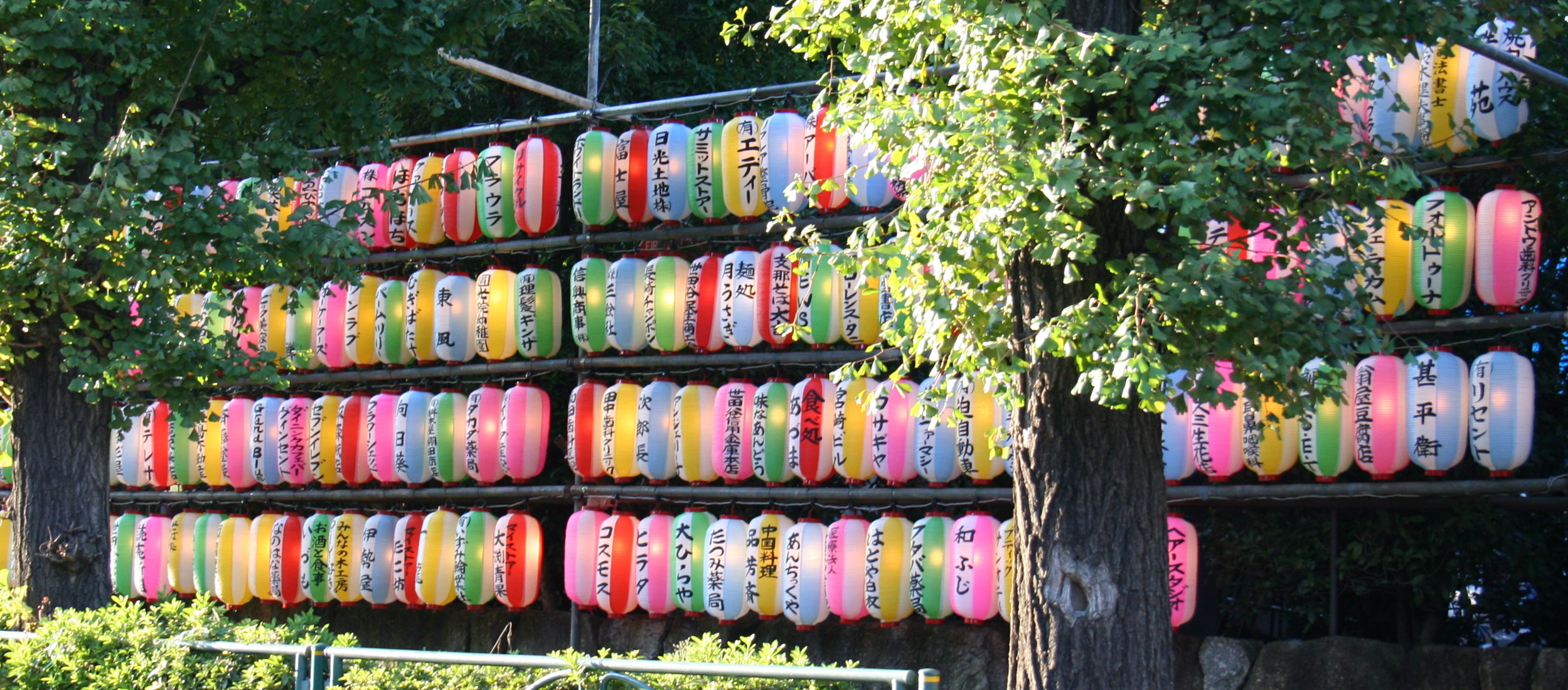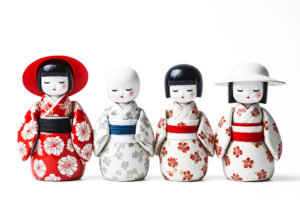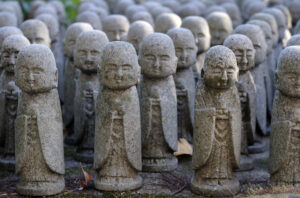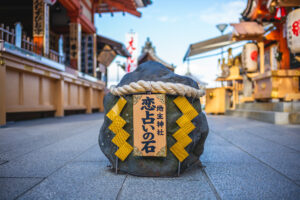Japanese lanterns, known as "chochin" and "toro," are more than just decorative objects; they are deeply embedded in the cultural fabric of Japan. These lanterns have evolved over centuries, serving various roles in society from practical lighting to intricate art forms. Their significance extends beyond aesthetics, penetrating the realms of spirituality, celebration, and even literature. In this article, we will explore the multifaceted cultural significance of Japanese lanterns, delving into their origins, symbolism, craftsmanship, and the evolving modern interpretations that keep this ancient tradition alive.
Understanding the Origins of Japanese Lanterns in Culture
Japanese lanterns have a rich history that dates back to the Heian period (794-1185). Initially, these lanterns served a purely functional purpose—illuminating homes and public spaces. Early designs were simple, made from natural materials like bamboo and paper. Over time, as Buddhism and Shintoism flourished, so did the decorative aspects of these lanterns, which became symbolic representations of light overcoming darkness.
One of the earliest forms of Japanese lanterns is the "toro," traditionally made from stone, wood, or metal. These lanterns were placed in gardens and temples, often near water, symbolizing a connection to nature and spirituality. As these lanterns became more ornate and varied in design, they also began to reflect regional styles, with local artisans contributing to their unique characteristics.
In rural areas, lanterns played a significant role in the agricultural calendar. Farmers would light lanterns to guide spirits and ancestors home during harvest festivals, intertwining the physical and spiritual realms. This connection to the land and the divine highlights the importance of lanterns in the rural Japanese lifestyle.
As Japan entered the Edo period (1603-1868), the popularity of lanterns soared, with urban centers embracing their use as decorative elements during celebrations. The evolution of lanterns mirrored Japan’s socio-political landscape, adapting to changes in culture, economy, and technology while always maintaining their essential role in communal and spiritual life.
The versatility of Japanese lanterns has allowed them to transcend their origins, becoming an integral element in various aspects of Japanese culture—from city streets festooned with lights to the intimate glow during religious ceremonies. Understanding these origins provides insight into how lanterns have shaped and been shaped by Japanese society throughout history.
As we delve deeper into the cultural roles of lanterns, it becomes clear that they are not merely artifacts; they are essential components of communal identity and heritage.
The Role of Lanterns in Traditional Festivals and Celebrations
Lanterns hold a prominent place in Japan’s traditional festivals, known as "matsuri," where they illuminate streets, temples, and homes. These vibrant displays of light often coincide with significant seasonal changes or historical events, creating a shared atmosphere of joy and reflection. Festivals such as Obon, Tanabata, and the Gion Matsuri in Kyoto prominently feature lantern lighting, signifying the collective spirit of communities.
During the Obon festival, which honors deceased ancestors, lanterns are lit to guide spirits back to their resting places. Families create "shoro," floating paper lanterns that are set adrift on rivers and ponds, offering a poignant visual depiction of the cycle of life and death. This act of lighting lanterns serves as both a tribute and a means of connection to the past.
Tanabata, the Star Festival, celebrates the meeting of two celestial lovers, Orihime and Hikoboshi. As part of this summer celebration, colorful paper lanterns are hung in homes and public spaces, symbolizing wishes for happiness and prosperity. The vibrant hues of these lanterns create a festive atmosphere, blending tradition with aspirations for the future.
The Gion Matsuri festival, one of Japan’s most famous, features elaborate floats adorned with lanterns that reflect the artistry of the region. The floats, lit by lantern light during the evening processions, create a magical ambiance that captures the essence of traditional Japanese aesthetics. The interplay of light and shadow during these festivals enhances the communal experience, drawing residents and tourists alike into the festivities.
In addition to these prominent festivals, lanterns are also integral to weddings, where they symbolize the hope of a bright future. The act of lighting lanterns during ceremonies fosters a sense of unity among participants, reinforcing communal bonds.
Thus, lanterns are not merely decorative; they are woven into the very fabric of Japanese communal celebrations, embodying both cultural heritage and the collective spirit of society.
Symbolism: What Japanese Lanterns Represent in Society
Japanese lanterns are imbued with a wealth of symbolism that speaks to various aspects of life, spirituality, and cultural values. At their core, lanterns represent illumination, both literally and metaphorically. They symbolize the light of knowledge and enlightenment, guiding individuals through life’s challenges and uncertainties.
In many cultures, light is associated with positive energies, hope, and prosperity. In Japan, lanterns embody this symbolism, often marking important transitions, such as the changing of seasons or life events like marriages and births. The glow of a lantern serves as a reminder of the warmth of community and familial bonds, illuminating the path toward connection and understanding.
Moreover, lanterns are closely tied to Japan’s spiritual beliefs. For instance, the use of lanterns during Obon signifies respect for the deceased, a physical manifestation of the belief that the spirits of ancestors continue to watch over the living. This relationship between the material and spiritual worlds underscores the cultural importance of lanterns in maintaining connections with lineage and heritage.
Additionally, Japanese lanterns have evolved into symbols of protection. They are often placed at temple entrances or along paths to ward off evil spirits. This protective quality extends beyond mere superstition; it reflects a cultural desire for harmony and safety within communities, reinforcing collective identity.
The delicate craftsmanship of lanterns also adds to their symbolic weight. Each design and color choice can convey specific meanings, from the calming presence of white lanterns representing purity to the vibrant reds symbolizing good fortune. This nuanced symbolism highlights the artistic and cultural significance embedded in the creation and display of lanterns.
In essence, the symbolism of Japanese lanterns transcends their physical form, resonating deeply within the psyche of society as representations of hope, protection, and the interconnectedness of life and death.
Craftsmanship: The Artistry Behind Lantern Creation
The artistry associated with Japanese lanterns is a testament to the country’s rich tradition of craftsmanship. Artisans dedicate countless hours to mastering the skills required to create these intricate pieces, whether they are traditional stone lanterns, paper lanterns, or contemporary interpretations. Each lantern is a blend of functionality, aesthetics, and cultural significance, reflecting the unique styles and techniques of various regions.
Traditional lanterns, such as the stone "toro," require not only a keen eye for design but also a deep understanding of materials. Craftsmen often source local stones, carving them into intricate shapes that fit harmoniously into their surroundings. The process is labor-intensive, involving chiseling, polishing, and sometimes even the incorporation of metal fixtures. This artistry is not merely about creating a light source; it is about embedding the work with cultural narratives and local heritage.
Paper lanterns, or "chōchin," demonstrate another level of craftsmanship. They are typically made from washi, a traditional Japanese paper known for its durability and translucent qualities. Artisans skillfully assemble the paper over bamboo frames, carefully ensuring that the final product can withstand various weather conditions while maintaining its delicate beauty. The craftsmanship involved in creating these lanterns often includes hand-painted designs, adding an individualized touch that elevates them from simple decorations to cherished works of art.
The artistry of lantern-making is often passed down through generations, with skilled artisans preserving ancient techniques while also adapting to modern tastes. Workshops and festivals promote this craftsmanship, encouraging younger generations to engage with traditional practices. This intergenerational transmission of skills is vital for preserving cultural heritage and continuing the legacy of Japanese lantern-making.
Moreover, contemporary lantern designs have pushed the boundaries of traditional craftsmanship. Innovative artists are experimenting with new materials, shapes, and technologies to create lanterns that reflect modern aesthetics while paying homage to their cultural roots. The incorporation of LED lighting, for instance, enables the creation of lanterns that are not only striking but also energy-efficient.
The craftsmanship behind Japanese lanterns is more than just artistry; it is a cultural dialogue that bridges the past and the present, illustrating the dynamic nature of Japanese culture as it continues to evolve.
Lanterns in Literature: A Historical Perspective
The imagery of lanterns has permeated Japanese literature for centuries, capturing the essence of transient beauty and deeper philosophical themes. In classical poetry, such as haiku, lanterns often symbolize fleeting moments, evoking a sense of nostalgia and longing. Poets have used the soft glow of lanterns to convey emotions associated with nature, love, and the passage of time.
In works like Matsuo Bashō’s haiku, the simplicity of a lantern’s light reflects the beauty of impermanence—a central tenet of Japanese aesthetics. These literary references to lanterns create a bridge between the physical world and the inner emotional landscape, underscoring the inherent beauty found in everyday objects.
The Edo period saw a surge in popular literature, where lanterns became prominent symbols in stories and plays. Kabuki theatre, for instance, often featured elaborate lanterns as part of stage designs, serving both practical and symbolic roles. The use of lanterns in these performances enhanced the storytelling experience, creating a visual representation of the themes being explored.
Additionally, lanterns have influenced modern literature, appearing in contemporary works as symbols of hope and resilience. Authors frequently incorporate lantern imagery to evoke a sense of continuity—a reminder of cultural heritage amid the chaos of modern life. This interplay between tradition and modernity in literature reflects the enduring significance of lanterns in Japanese society.
Notably, the act of lighting lanterns has also found its place in literary narratives as a ritual of remembrance, particularly during the Obon festival. Writers have eloquently described the emotional weight associated with lighting lanterns to honor ancestors, capturing the blend of sorrow and joy inherent in these moments.
Through historical and contemporary lenses, lanterns in Japanese literature embody the complexities of life, inviting readers to reflect on their own experiences and connections to cultural traditions.
The Influence of Japanese Lanterns in Popular Culture
In recent years, the allure of Japanese lanterns has transcended cultural boundaries, making them a prominent feature in global popular culture. From fashion to film, the aesthetic appeal of lanterns has inspired artists and designers worldwide, leading to a fusion of traditional and contemporary styles that resonates with diverse audiences.
In the realm of fashion, designers have incorporated lantern motifs into their collections, using the shapes and colors of these lanterns to create striking garments and accessories. The ethereal quality of lantern light, combined with traditional patterns, adds an element of sophistication and cultural depth to modern fashion. This trend reflects a growing interest in cultural appreciation, as designers draw inspiration from the elegance of Japanese aesthetics.
Japanese lanterns have also found their way into the film industry, where they often symbolize themes of love, loss, and nostalgia. Cinematic representations of lanterns create a visually enchanting atmosphere, enhancing storylines with their evocative glow. Films set in Japan frequently depict lanterns during significant moments, reinforcing their role as symbols of connection to cultural heritage and familial bonds.
Moreover, various art installations around the world have embraced the beauty of lanterns, creating immersive experiences that engage audiences with light and shadow. Artists have experimented with lantern designs, using them in public art projects that encourage community interaction and participation. These installations not only highlight the artistic potential of lanterns but also promote cultural exchange by inviting people to engage with Japanese traditions.
Social media platforms have also played a role in popularizing Japanese lantern aesthetics, with influencers and content creators showcasing lantern-themed decor and festival experiences. The visual impact of lanterns, particularly during events like the Tanabata festival, has sparked a wave of interest, encouraging a global audience to appreciate their cultural significance.
As Japanese lanterns continue to influence popular culture, they serve as a reminder of the rich traditions that inspire contemporary creativity. This intersection of old and new fosters an appreciation for cultural heritage while expanding the reach of Japanese art and aesthetics in the global landscape.
Seasonal Traditions: Lanterns in Summer and Winter
Japanese lanterns play a significant role in seasonal traditions, particularly during the summer and winter months. Each season brings its own unique celebrations and rituals, with lanterns serving as both symbols and practical elements that enhance the cultural experience. The vibrant and diverse ways in which lanterns are integrated into seasonal festivities highlight their importance in Japanese culture.
During the summer, the Obon festival is one of the most significant events featuring lanterns. As families honor their ancestors, the soft glow of lanterns guides spirits back to their resting places. In many regions, communities gather to light "shoro" lanterns, setting them afloat on rivers or surrounding them with fire to create a mesmerizing display. This practice conveys a sense of continuity and remembrance, reinforcing communal ties and shared cultural heritage.
In contrast, winter celebrations often revolve around themes of warmth and light during the cold, dark months. The New Year, or "Shōgatsu," is marked by family gatherings and rituals that include the lighting of lanterns to invite good fortune for the year ahead. Lanterns are often placed at entrances to homes, symbolizing a welcoming spirit for guests and deities alike.
Another significant winter event is the "Yukimatsuri," or Snow Festival, held in Hokkaido. Lanterns are intricately designed from snow and ice, illuminating the winter landscape with ethereal beauty. This fusion of natural elements and light creates a magical atmosphere, drawing in visitors and celebrating the wonder of winter. The artistry involved in crafting these ice lanterns showcases the creativity and resourcefulness inherent in Japanese culture.
In both seasons, the act of lighting lanterns represents a moment of reflection and connection to nature and spirituality. Whether it’s the warmth of summer nights filled with festivity or the serene beauty of winter landscapes, lanterns create a unique ambiance that enhances shared experiences.
Seasonal traditions involving lanterns are not just about illumination; they embody the spirit of celebration, remembrance, and community. As each season unfolds, lanterns remind us of the cyclical nature of life, marking the passage of time and the changing of traditions.
The Spiritual Connection: Lanterns and Ancestral Worship
Japanese lanterns hold a profound spiritual significance, particularly in the context of ancestral worship. The act of lighting lanterns serves as a bridge between the living and the deceased, reflecting deep-rooted beliefs about the continuity of life and the respect owed to ancestors. These practices are woven into various cultural rituals, highlighting the importance of honoring one’s lineage.
During the Obon festival, lanterns are lit to guide the spirits of ancestors back to their resting places, ensuring they are welcomed and honored. This ritualistic lighting serves as a communal expression of gratitude, fostering a connection between generations. Families often prepare special altars adorned with lanterns, flowers, and food offerings, creating a sacred space for reflection and remembrance.
The symbolism of light plays a crucial role in these rituals. Lanterns are seen as embodiments of spiritual illumination, dispelling darkness and allowing ancestral spirits to find their way home. The soft glow of the lanterns creates a serene atmosphere, inviting moments of contemplation and connection to the past.
In Shinto and Buddhist practices, lanterns are commonly placed in temples and shrines as offerings to deities and spirits. These places of worship often feature elaborate stone lanterns, symbolizing the divine light that guides believers on their spiritual journeys. By incorporating lanterns into these sacred spaces, practitioners reinforce their commitment to honoring the spiritual world while seeking blessings and guidance.
The spiritual connection of lanterns extends beyond festivals to everyday life. For many Japanese families, the act of lighting a lantern at home is a daily practice of remembrance. This ritual serves as a reminder of the influence of ancestors on present lives, fostering a sense of continuity and respect for familial ties.
Ultimately, the spiritual connection of Japanese lanterns illustrates the balance between the material and spiritual realms. Through the act of lighting lanterns, individuals engage in a dialogue with their past, honoring the legacy of those who came before them while nurturing their own spiritual journeys.
Modern Adaptations: Japanese Lanterns in Contemporary Design
As Japanese lanterns continue to evolve, contemporary adaptations reflect modern tastes while honoring traditional craftsmanship. Designers and artists are reimagining lanterns for a new era, incorporating innovative materials and technologies to create pieces that resonate with today’s aesthetic sensibilities. This fusion of tradition and modernity breathes new life into an ancient art form.
One notable trend in contemporary lantern design is the incorporation of eco-friendly materials. As sustainability becomes increasingly important in design practices, many artisans are turning to biodegradable and recycled materials, ensuring that lanterns are not only beautiful but also environmentally conscious. This shift reflects a broader movement within the design community to prioritize eco-friendly practices while retaining cultural authenticity.
Furthermore, modern designs often feature minimalist aesthetics that embrace clean lines and simplicity. Artists are experimenting with geometric shapes, creating lanterns that blend seamlessly into modern interior and exterior spaces. This minimalist approach allows lanterns to serve as striking focal points, elevating the ambiance of both traditional and contemporary settings.
Technological advancements have also influenced lantern design, with the introduction of LED lighting transforming how lanterns are illuminated. This innovation opens up new possibilities for color and brightness, allowing for dynamic lighting effects that can be adjusted to suit different occasions. LED lanterns can be programmed for various settings, making them popular choices for events and festivals.
Additionally, contemporary lanterns are increasingly used in public art installations, where artists create immersive experiences for viewers. These installations often explore themes of light, shadow, and space, inviting participants to engage with the artistry of lanterns in new and meaningful ways. By transforming public spaces into realms of beauty and reflection, these contemporary adaptations foster appreciation for the cultural significance of lanterns.
In essence, modern adaptations of Japanese lanterns bridge the gap between tradition and innovation. By honoring the past while embracing contemporary design principles, artisans are ensuring that lanterns remain relevant and cherished in today’s society.
Sustainability: Eco-Friendly Lantern Options Today
As the global focus on sustainability intensifies, the world of Japanese lanterns is also adapting to prioritize eco-friendly practices. Traditional lantern-making, which often relied on natural materials like bamboo and paper, is now evolving to incorporate sustainable methods and materials that minimize environmental impact. This shift not only preserves the cultural significance of lanterns but also aligns with contemporary values of ecological responsibility.
One growing trend is the use of sustainable materials like recycled paper, organic cotton, and bamboo sourced from responsibly managed forests. Artisans are increasingly seeking out eco-friendly alternatives to traditional materials, ensuring that their practices contribute positively to the environment. This commitment to sustainability reflects a broader cultural shift toward mindful consumption, where artisans and consumers alike recognize the importance of ethical practices in preserving cultural heritage.
In addition to material choices, many modern lanterns are designed for reusability and longevity. Rather than being disposable or single-use, contemporary lanterns are crafted with an emphasis on durability, allowing them to be enjoyed for many seasons. This approach not only reduces waste but also encourages a deeper appreciation for the artistry and craftsmanship behind each lantern.
Another significant innovation in sustainable lantern design is the integration of solar power. Solar-powered lanterns utilize renewable energy to illuminate spaces, making them both practical and environmentally friendly. These lanterns can be used in outdoor settings, enhancing gardens, patios, and festivals without relying on traditional electrical sources. This compatibility with modern lifestyles aligns with a growing preference for energy-efficient solutions.
Artisans are also engaging in community initiatives that promote the use of sustainable lanterns. Workshops and events centered around eco-friendly lantern-making invite participants to learn about traditional techniques while emphasizing the importance of sustainability. These initiatives not only foster creativity but also cultivate a shared sense of responsibility toward the environment and cultural heritage.
As the world becomes increasingly aware of the need for sustainable practices, Japanese lanterns stand at the intersection of tradition and innovation. By embracing eco-friendly materials and methods, artisans are ensuring that this treasured cultural symbol continues to illuminate lives—








